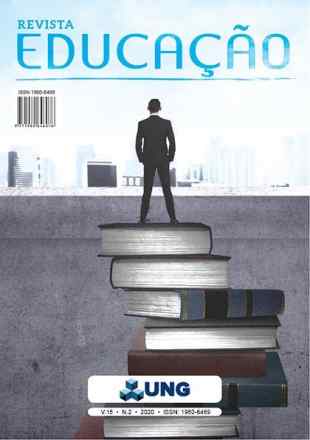DIRETRIZES PARA O PROJETO DE EDIFÍCIOS VOLTADOS PARA O APOIO AO ENSINO SUPERIOR REALIZADO ATRAVÉS DO EAD NO BRASIL
Revista Educação UNG-Ser
DIRETRIZES PARA O PROJETO DE EDIFÍCIOS VOLTADOS PARA O APOIO AO ENSINO SUPERIOR REALIZADO ATRAVÉS DO EAD NO BRASIL
Autor Correspondente: Roberta Betania Ferreira Squaiella | [email protected]
Palavras-chave: : Projeto de edifícios. Ensino a distância. Ensino superior. Arquitetura escolar.
Resumos Cadastrados
Resumo Português:
Este artigo posiciona-se frente à intensa e crescente expansão recente do ensino superior à distância no Brasil devido a condicionantes como: o surgimento de novas concepções pedagógicas; a clara emergência do aluno nativo digital; o rápido desenvolvimento das tecnologias de informação e comunicação; a eclosão de novas legislações que perseguem o estímulo ao aumento quantitativo e qualitativo da estrutura educacional. Vive-se a era do conhecimento com a afi rmação do teletrabalho e a banalização do lugar e a necessidade das relações assíncronas, impossíveis de serem respondidas pelo ensino unicamente presencial. Tudo isto possui fortes consequências para o projeto arquitetônico escolar, que precisa ser aperfeiçoado, tanto na sede, como nos polos de apoio presencial, envolvendo a infraestrutura física e os apoios essenciais para a operacionalidade dos cursos. A metodologia empregada é pesquisa bibliográfi ca, enfocando a caracterização do processo em âmbito nacional e internacional. Os resultados alcançados constituem-se em diretrizes a serem aplicadas em projetos de espaços físicos de apoio ao ensino a distância e híbridos
Resumo Inglês:
This article stands in the face of the intense and growing recent expansion of distance higher education in Brazil due to such factors as: the emergence of new pedagogical conceptions; the clear emergence of the native digital student; the rapid development of information and communication technologies; the emergence of new legislation that seeks to stimulate the quantitative and qualitative increase of the educational structure. The era of knowledge is lived with the assertion of telework and the trivialization of the place and the need for asynchronous relationships, impossible to be answered by the classroom-only teaching. All of this has strong consequences for the school’s architectural project, which needs to be improved, both at headquarters and at the poles of face-to-face support, involving the physical infrastructure and the essential supports for the operation of the courses. The methodology used is bibliographic research, focusing on the characterization of the process in national and international scope. The results obtained are guidelines to be applied in projects of physical spaces in support of distance learning and hybrids.

